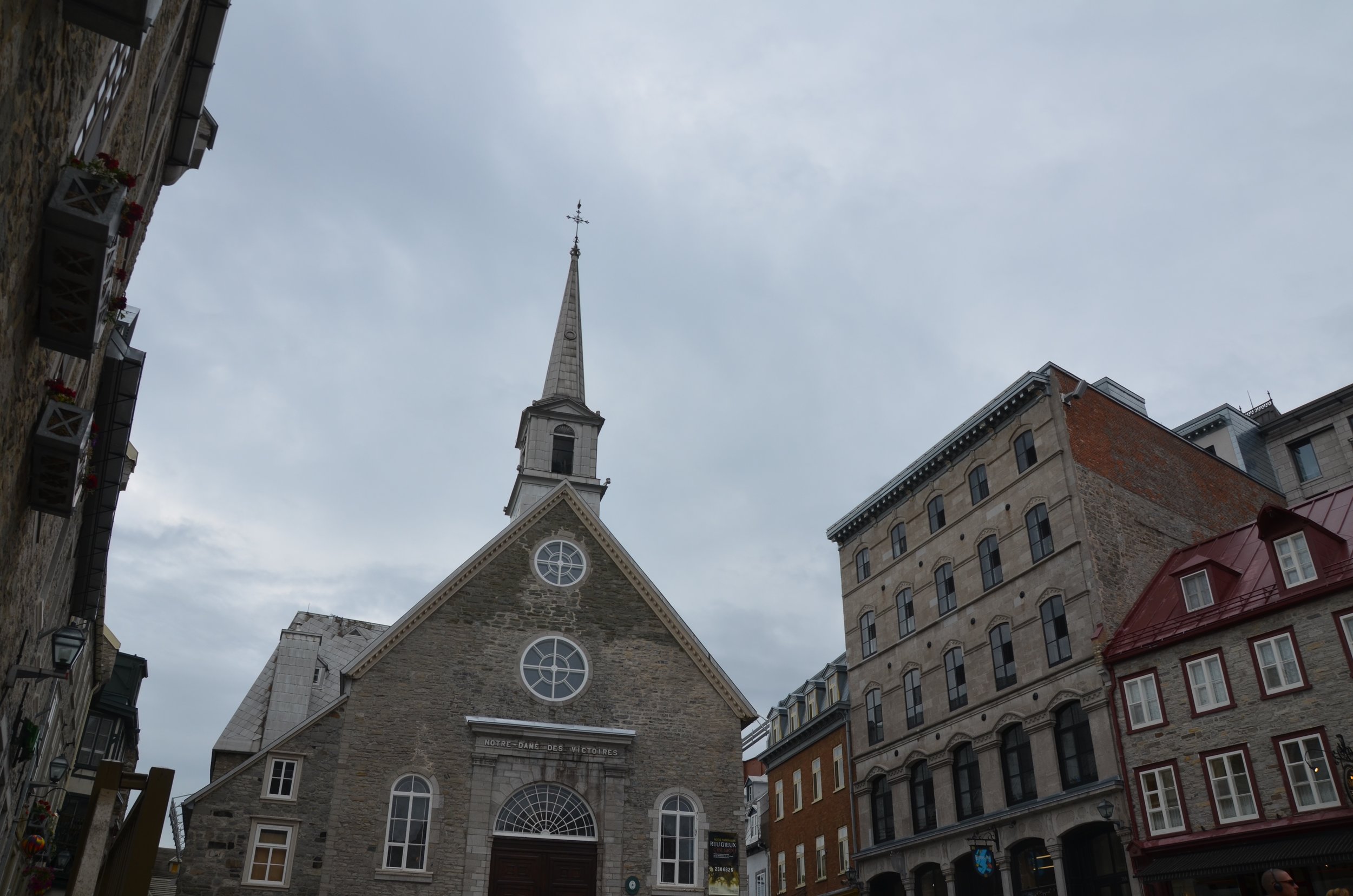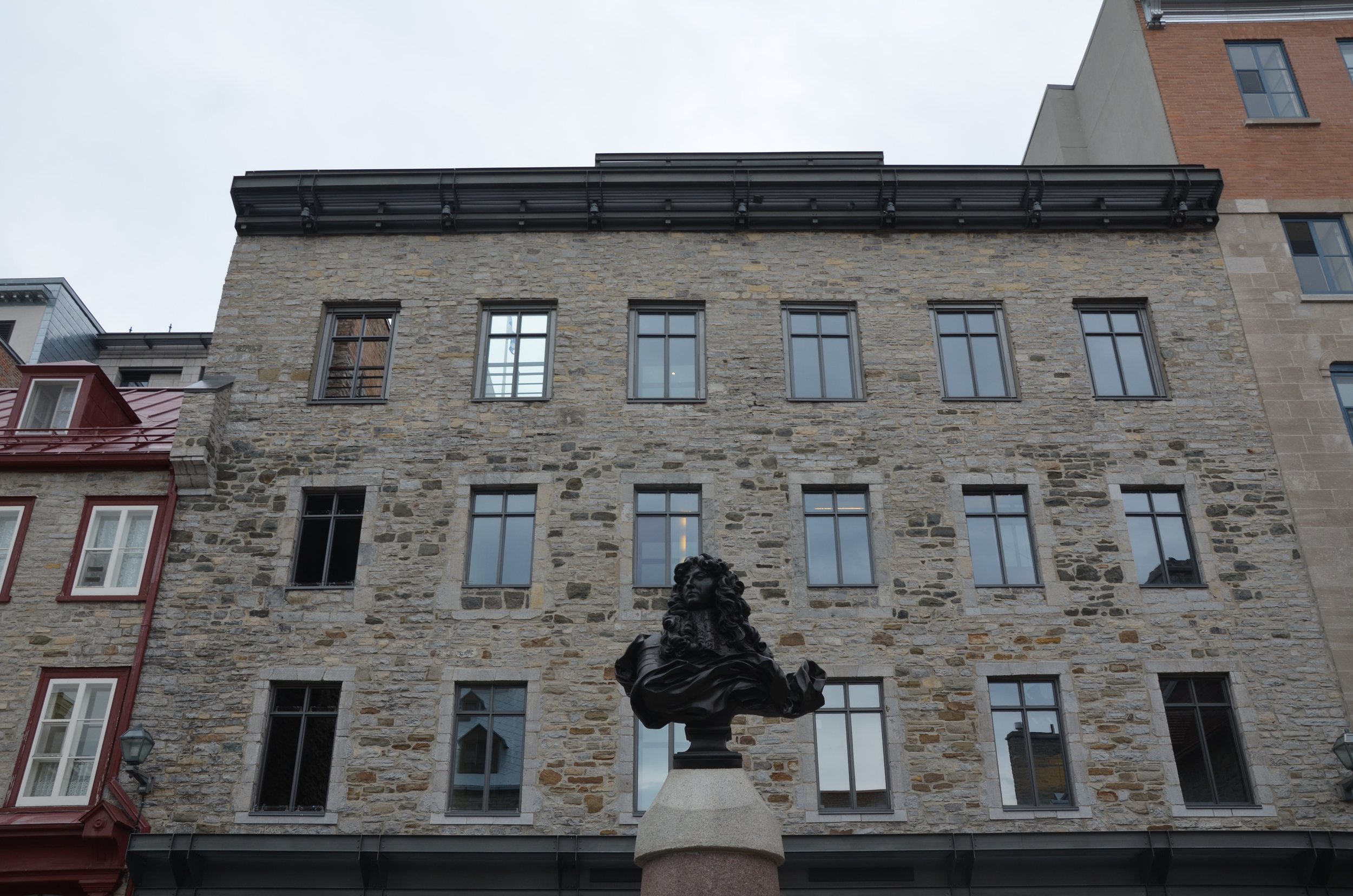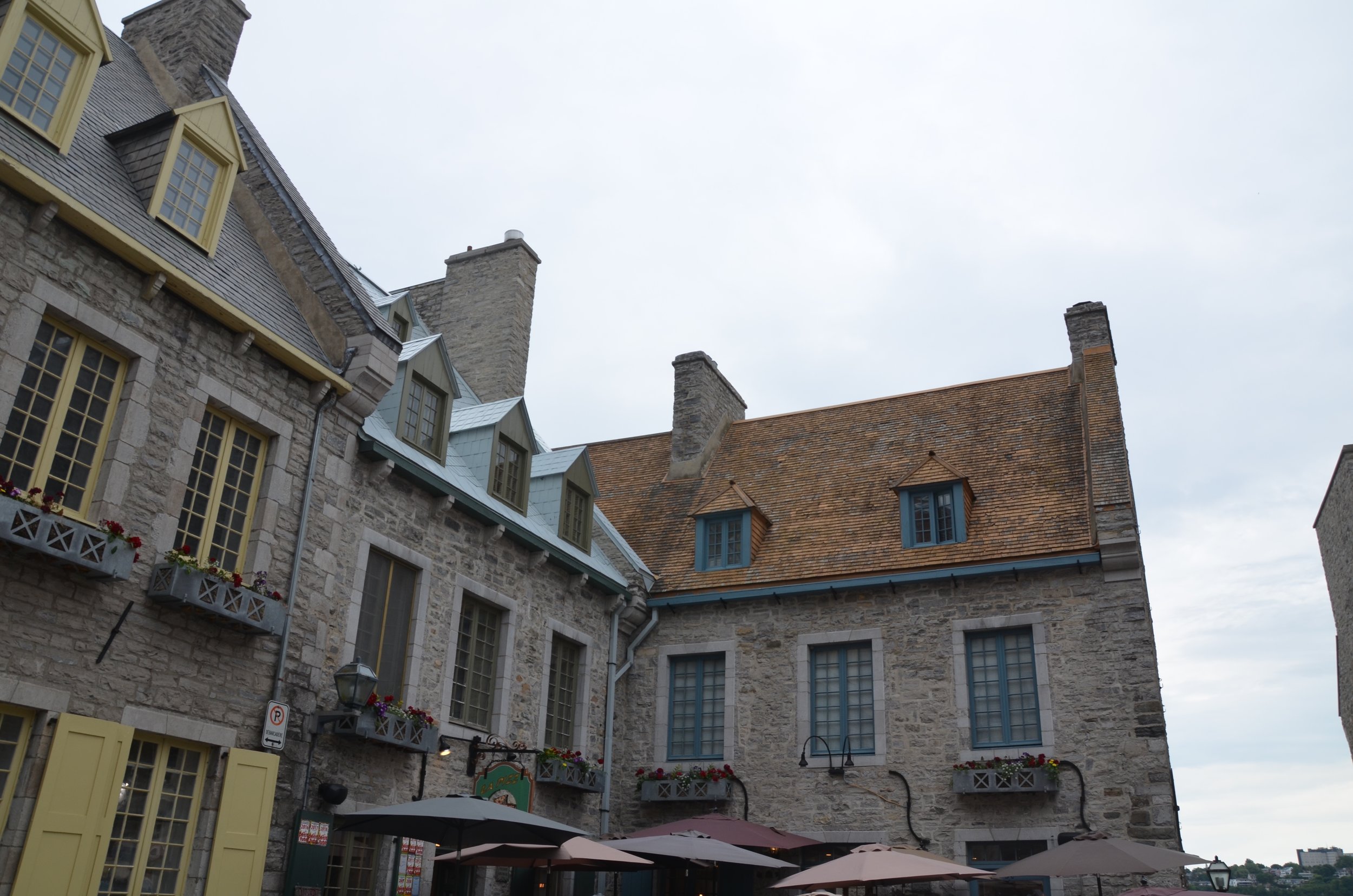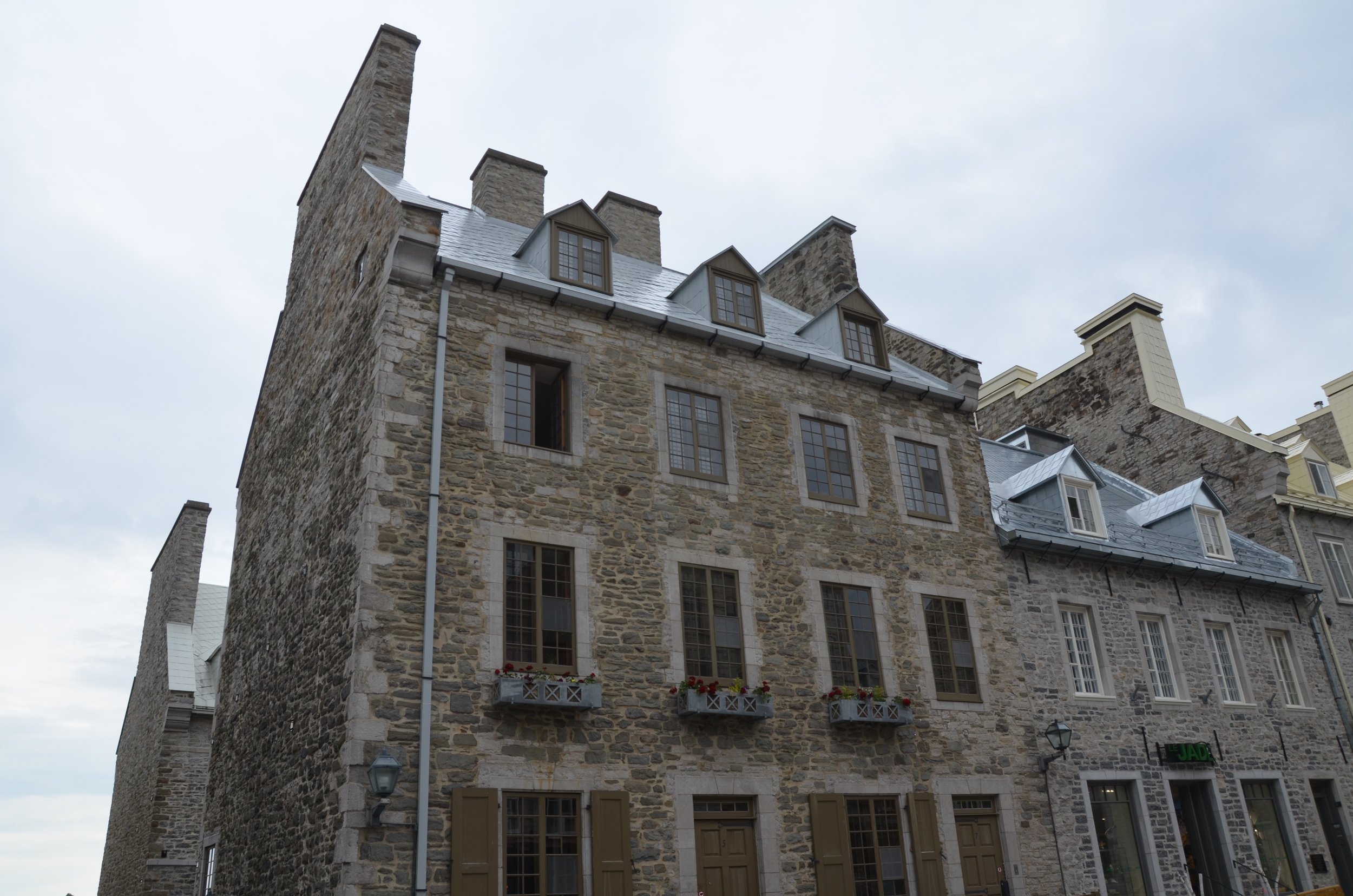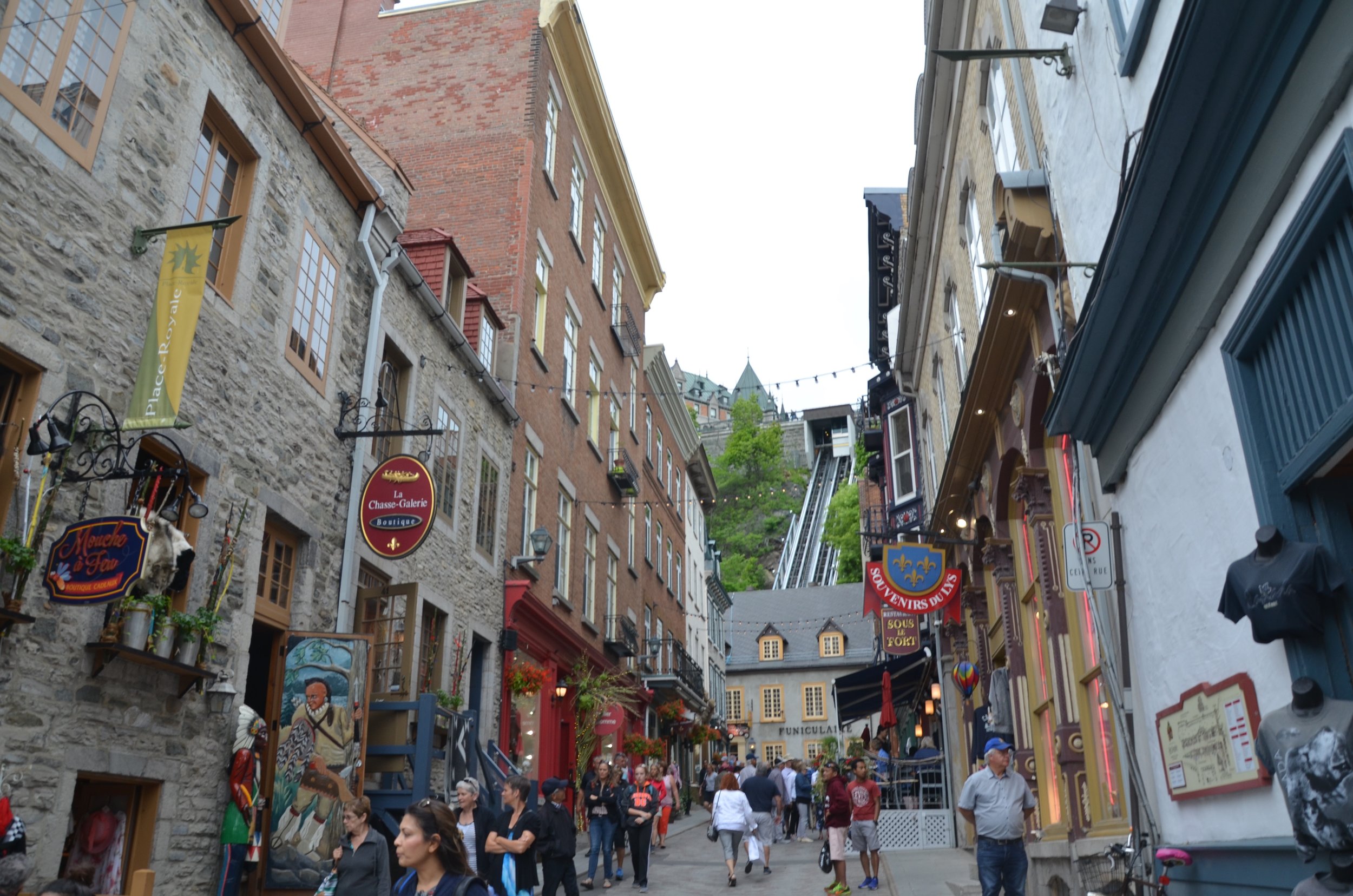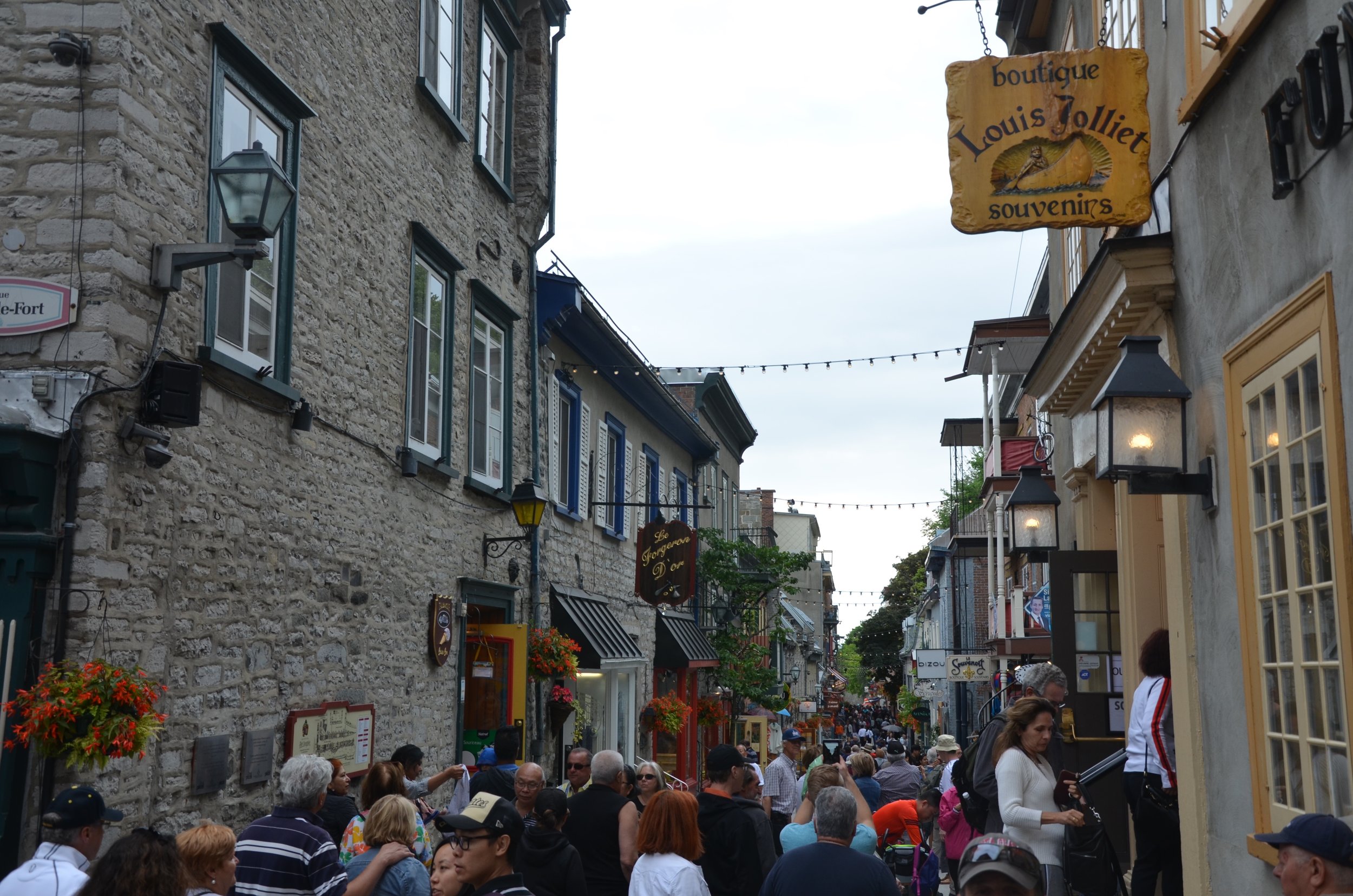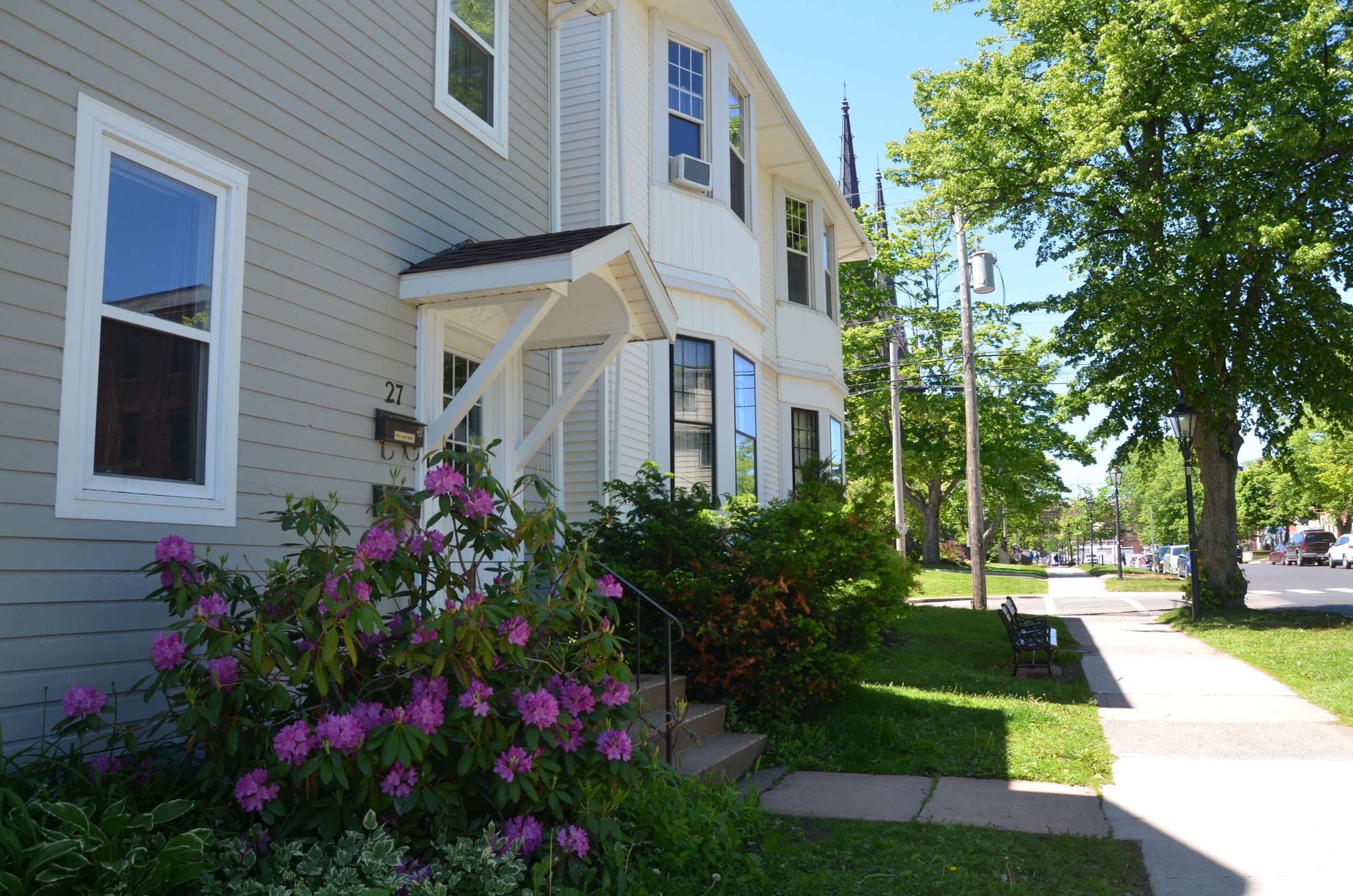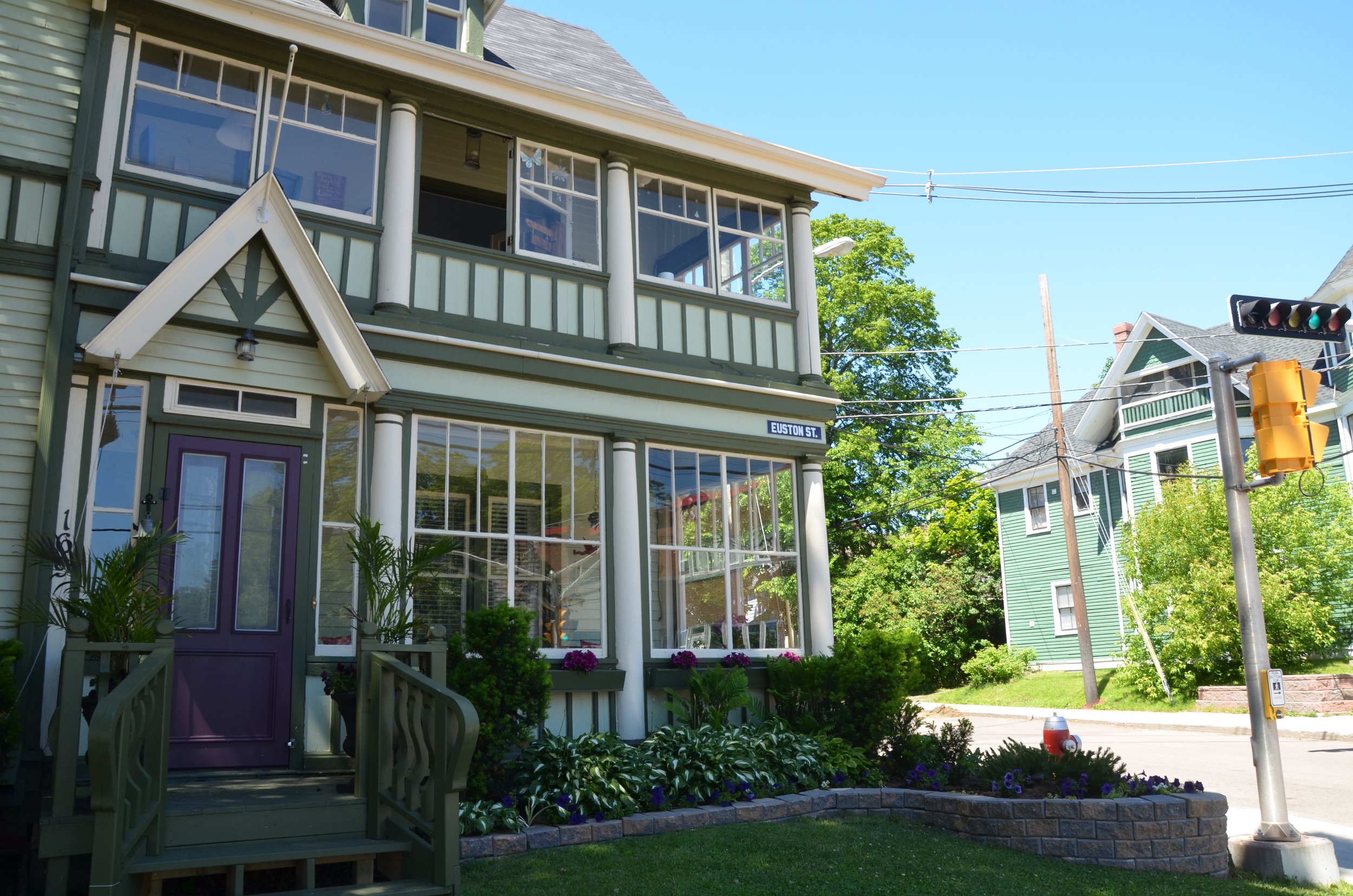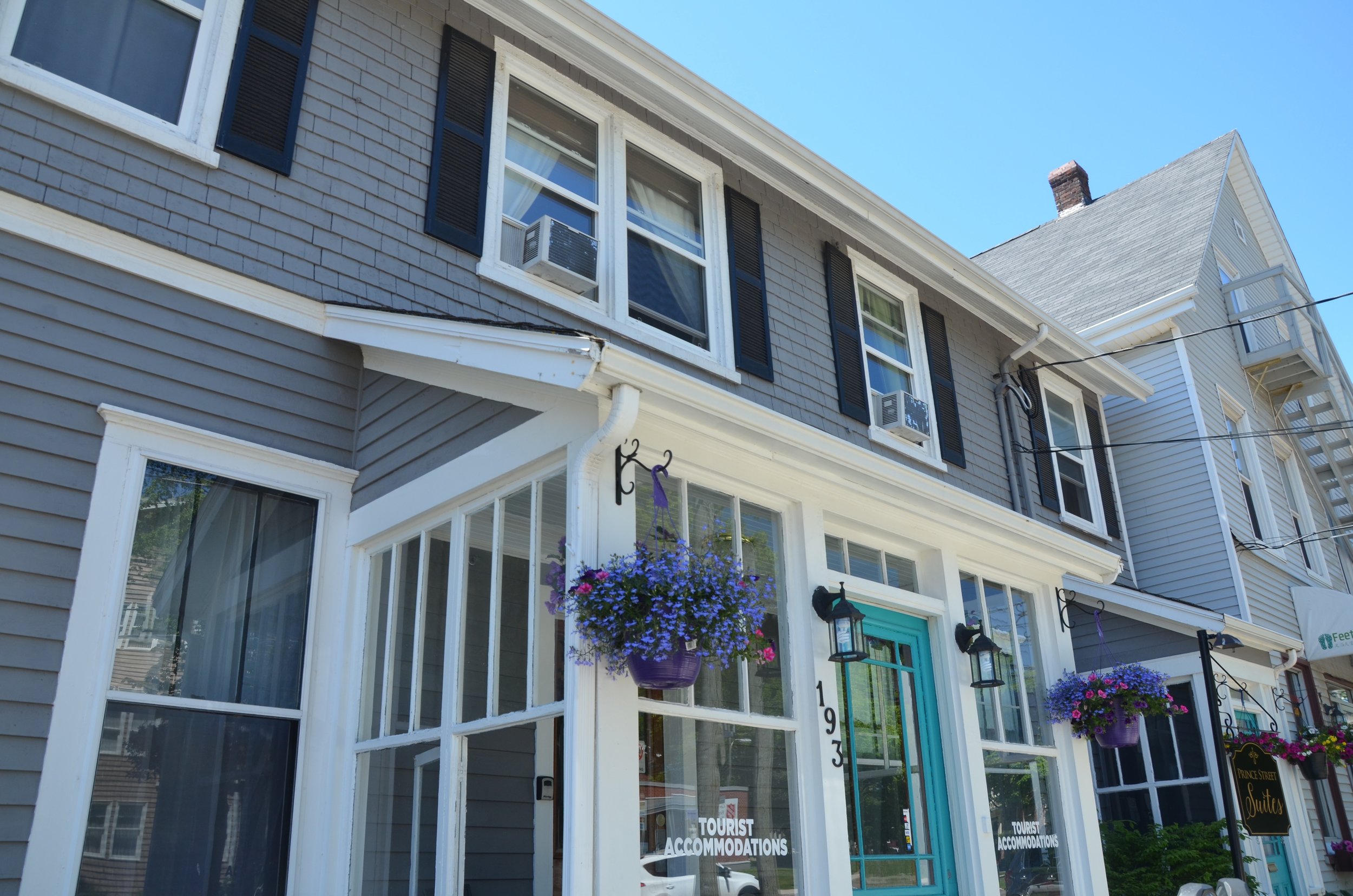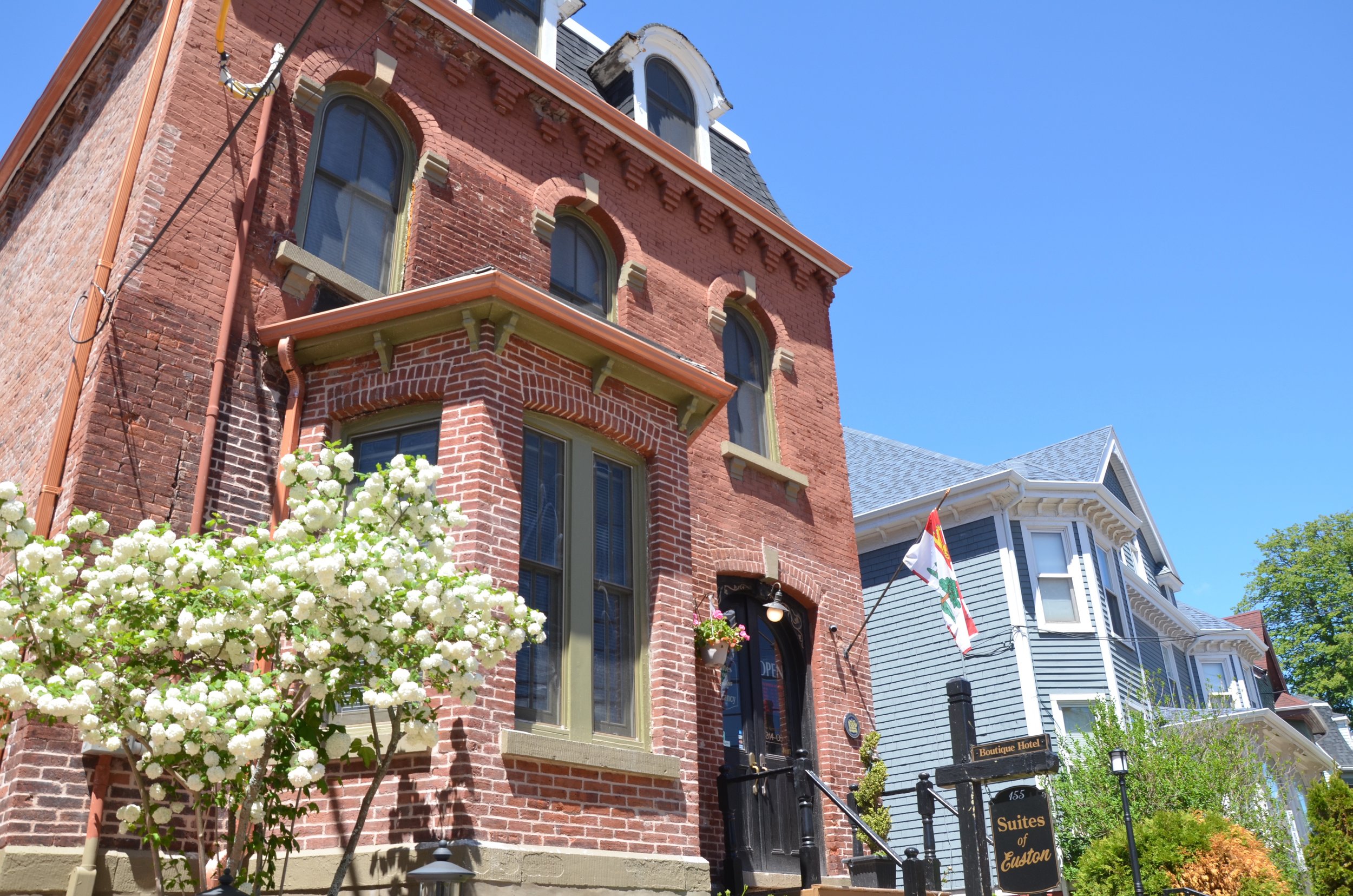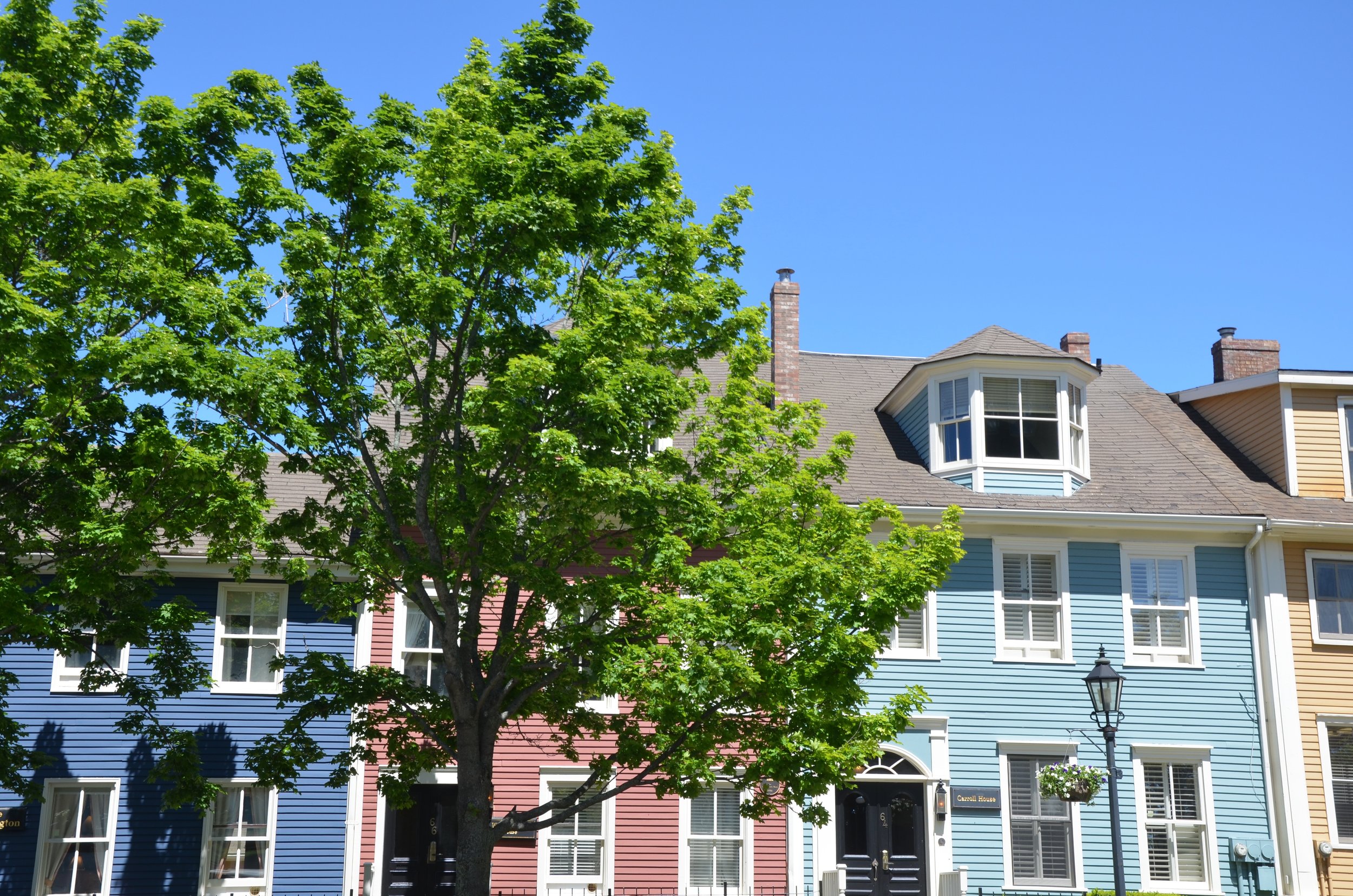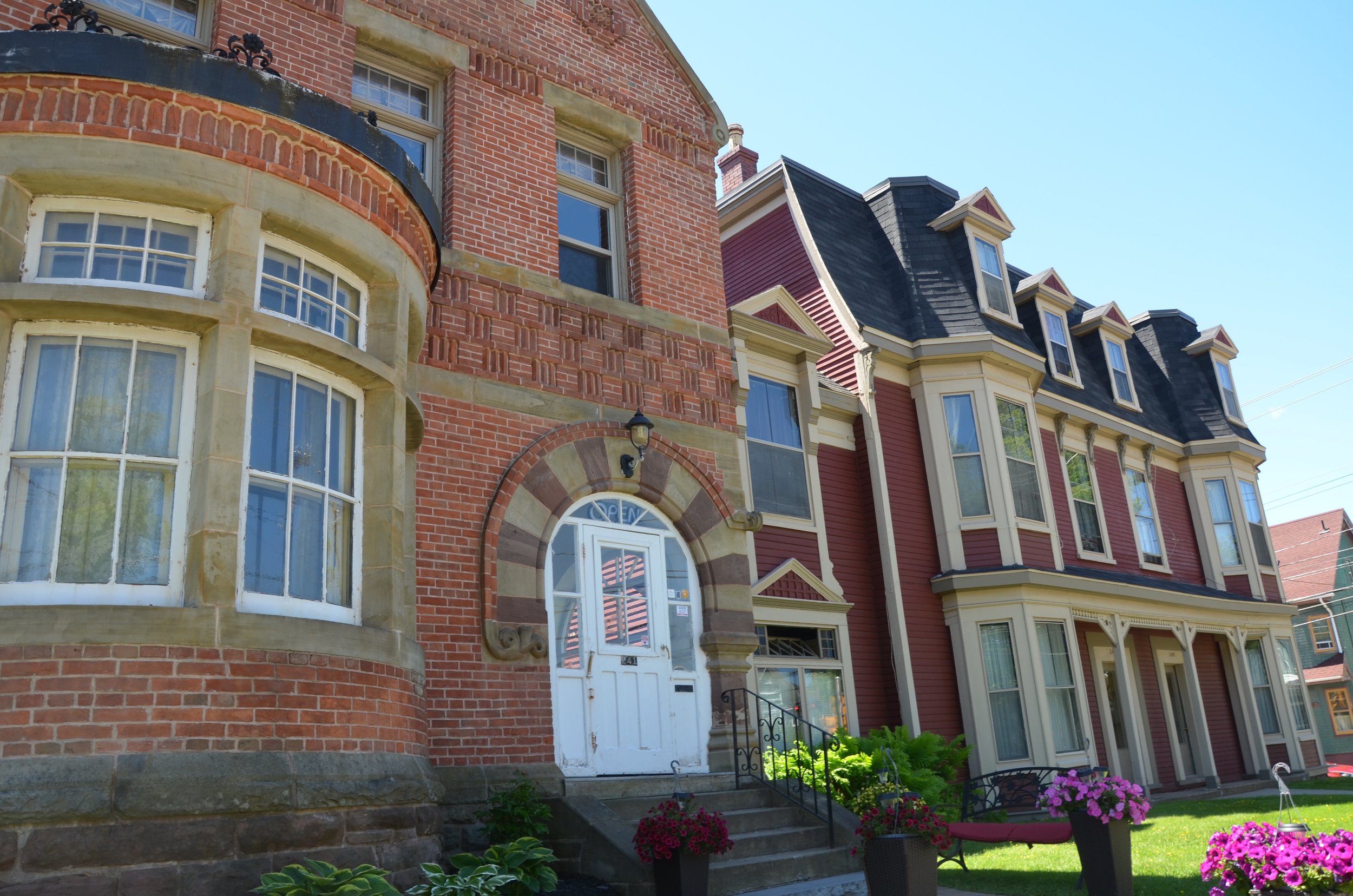Canada
I discovered more about my home country on a trip this June, sailing up the Saint Lawrence via cruise ship to explore two Canadian cities. The boat left from Montreal so I stayed there the night before the cruise, in the old town near the port, and enjoyed a nice meal at Moshes. (Just down the street is Schwartz's Deli, but you'll have to wait in line for a smoked meat sandwich, so don't go there if you're already hungry!). After a night in Montreal, the cruise set sail. Along the coastline, as we made our way up the St. Lawrence, I spotted whales—definitely a highlight, as well as walking the cobblestone streets of Quebec City, and checking out a vintage bookstore and Cow's ice cream in Charlottetown, PEI. I found the European influence to be more evident in these East Coast cities than in Toronto, where I'm from, and I still find that fascinating. The details of English and French architecture can be found in buildings, churches and streets. The First Nations who arrived in North America thousands of years before the Europeans have also left their mark on the East Coast, and everywhere else in Canadian culture, from food cultivation to clothing, hairstyles, and language. Even "Quebec" originates from an Algonquin word, meaning "narrow passage."
Quebec City apartments in June.
Quebec City
Walk around
I would highly recommend a walking tour in the old town. I did one with a group of about a dozen people that started at the Centre Infotouriste de Quebec, across from the Place d'Armes, a beautiful park. Even if you don't enjoy learning about the history, the views are amazing. It's easy to understand why the area was coveted by Europeans upon arrival in the 16th and 17th centuries. A boardwalk strategically placed atop a cliff, the Terrasse Dufferin, overlooks the St. Lawrence where the river narrows (another nod to its Algonquin name). Nearby is the towering Chateau Frontenac, a 19th century hotel named after a governor of New France.
Places d'Armes
Views from the Terrasse Dufferin, lined with canons.
Gazebos along the boardwalk.
A statue of Champlain (below) can be seen across from the Chateau Frontenac on the the Terrasse Dufferin. Quebec City was founded by the French explorer in 1608—although there was already a large population of First Nations in the area, like the Innu, Algonquin, Huron Wendat, and Iroquois. There were no remnants of any original First Nations structures on the walking tour I went on, but there were several shops dedicated to displaying First Nations artwork and goods. In Quebec, there are 11 First Nations and 55 communities, according to Quebec Aboriginal Tourism. To learn more, visit Indigenous Works for resources.
The statue of Samuel de Champlain stands guard on the Terrasse Dufferin.
Samuel de Champlain
The Chateau Frontenac is said to be haunted by two ghosts.
This side of the monument shows Montcalm's name. Wolfe is on the opposite side. The inscription on the front is written in Latin.
A city, divided
The city is essentially split into an upper and lower town. If you have to walk to the upper part, where my tour started, I recommend giving yourself some time, especially in the summer. It's an uphill battle. And it can get very hot. (If you're lazy, you can take a funicular.)
The boardwalk, canons, castle and monument (dedicated to two generals, Montcalm and Wolfe), are all in the upper town. As you walk down the narrow streets, descending slowly, there are colourful, quaint buildings—like the historic restaurant Aux Anciens Canadians, painted red and white.
The building, known as the Maison Jacquet, was built between 1675 and 1675. It offers up Quebec cuisine.
A religious retreat
Quebec City is home to the Ursulines monastery, founded in 1639, and the Holy Door at the Cathedral-Basilica of Notre-Dame de Québec. The cathedral's interior rivals the stunning churches of Europe, drenched in ornate decorations and splashed in gold. While I visited, there was a service going on in French, but photos were still permitted.
A statue of Ursuline nun Marie de l'Incarnation, who helped spread Catholicism in New France.
Inside a courtyard of the monastery.
Inside the cathedral.
The Holy Door through the fence of the cathedral.
How low can you go?
The lower town has tons of restaurants, shops, galleries and narrow streets to explore. There's a massive mural that shows some of the city's history and its famous figures, like local writers and artists. Grab a seat in front and try to spot all the details. Or pose in front of it (like dozens of other tourists before you).
Charlottetown, PEI
Quaint and quirky
I hopped on a double decker bus for an hour tour of Charlottetown, with its colourful and bright houses and picturesque views of the waterfront. There are lots of spots to eat lobster and buy books by Lucy Maud Montgomery, author of Anne of Green Gables, which was set on Prince Edward Island. The city is steeped in Canadian history—with historic homes like Beaconsfield and churches like St. Paul's. Previous to European settlers, it was home to the Abegweit Mi'kmaw Nation and Mi'kmaq communities. PEI was colonized by the French in 1720.
Ready to read
Of course I had to find a vintage book store to add to my collection—and I was not disappointed. I wandered around Bookman on one of the main streets. (It's near Cow's so it was meant to be.) There were so many classics to choose from and I ended up buying Tarzan by Edgar Rice Burroughs, the Works of Victor Hugo, and Exile and the Kingdom by Albert Camus.
All the pretty houses
I went on my own walking tour after I hopped off the bus. The homes were picture perfect on a sunny (but windy) day. The pastel colours and bright flowers really show off that East Coast charm. Each home had me saying "I would live in that one!"—especially the sprawling cabins overlooking the water, and the ones with sunrooms and big porches perfect for reading.
Walk around
I had some fresh fish for lunch with a view of the waterfront. There's no shortage of seafood options in Charlottetown. After you fill up and check out the vintage book shop (obviously), be sure to wander around some local stores. For East Coast trinkets and unique gifts, head to Cool As A Moose. If you're looking for something a little more sophisticated, check out Victoria Row, lined with colourful picnic tables.
Victoria Row in Charlottetown


















